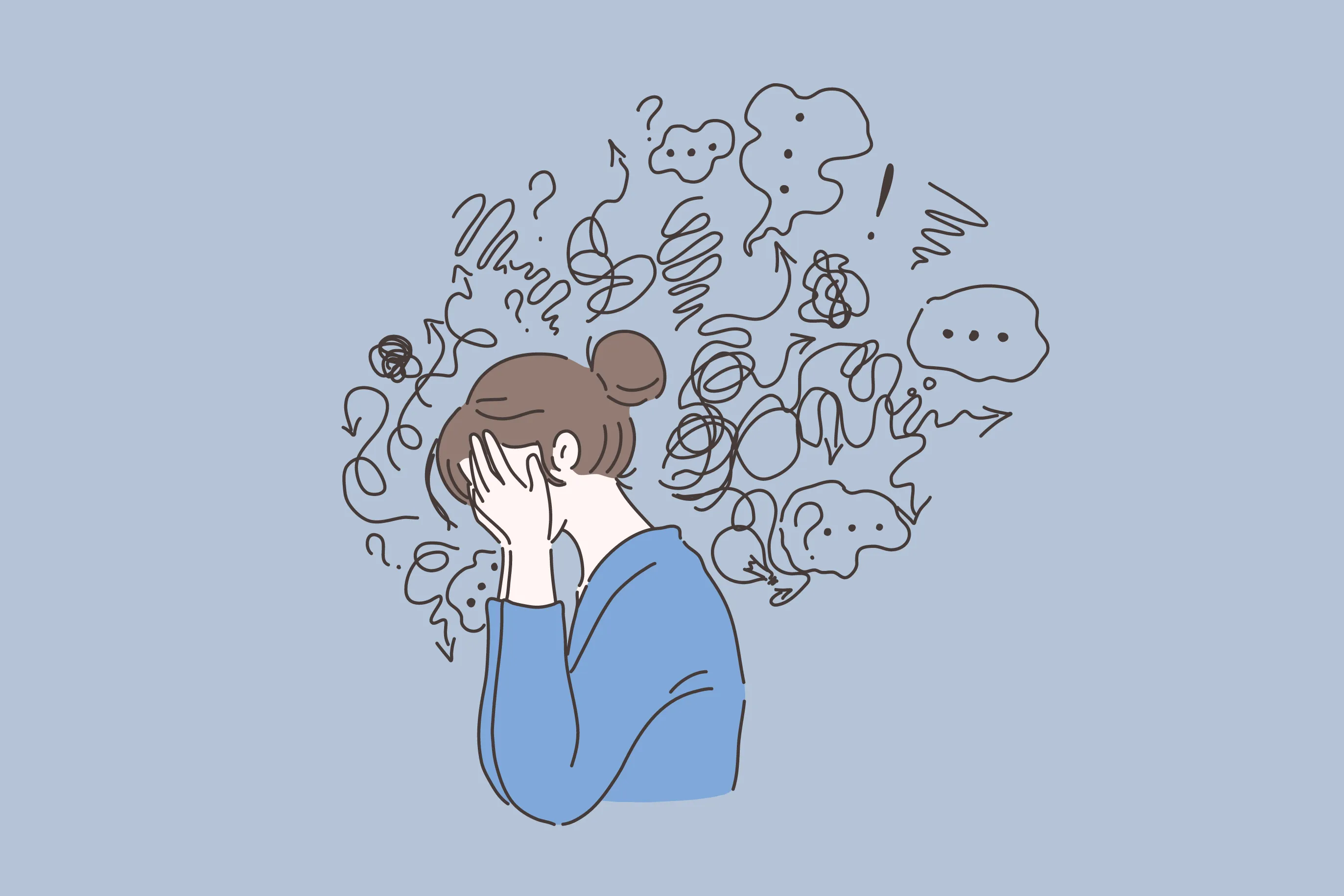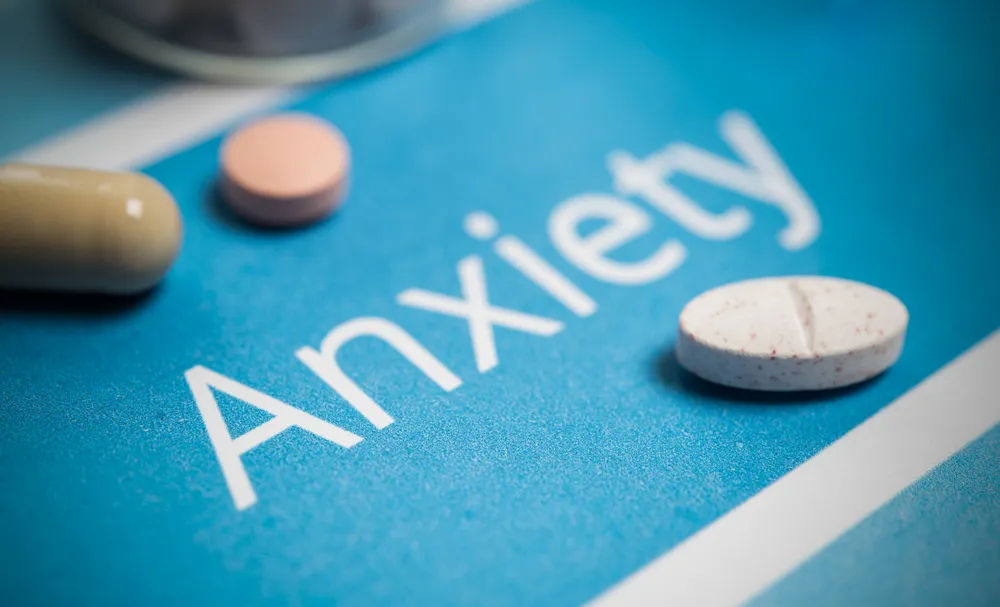It’s normal to have general worries and fears. However, if these fears become persistent on a daily basis for months on end, it may be generalized anxiety disorder (GAD). Those with GAD tend to worry about unrealistic fears and worst-case scenarios on a regular basis, which can drastically affect their relationships and quality of life.
If you feel that you or a loved one might be struggling with GAD, it’s important to learn about the disorder and how to treat it. This mental health disorder is more common than you’d think and can be effectively prevented and treated once diagnosed. If you’re looking to learn more about GAD, follow along as we break down all the signs, symptoms, causes, and treatments you should know.
What Is Generalized Anxiety Disorder?
According to Healthline, GAD can be defined as an uncontrollable worry about common occurrences and situations. This disorder differs from typical worry in the frequency and extremeness of anxious thoughts. For example, worrying about finances is common, but this may be diagnosed as GAD if an individual is worried about finances several times on a daily basis for months.
Sometimes individuals with GAD also may worry without cause. They may have a constant feeling that something bad might happen without the ability to relax or calm their thoughts. Excessive worry and fear may interfere with the individual’s day-to-day life and relationships.
Common Symptoms
According to the Mayo Clinic, a few common symptoms of GAD that individuals should be aware of include the following:
- Persistent, unrealistic worrying
- Overthinking plans and worst-case scenarios
- Tendency to struggle with uncertainty
- Fear of making a wrong decision
- Difficulty concentrating
- Restlessness with an inability to feel calm or relaxed
Physical Symptoms
Generalized Anxiety Disorder may also appear in physical signs and symptoms within the patient. A few physical symptoms to be aware of include:
- Difficulty sleeping or insomnia
- Fatigue
- Muscle tension or aches
- Irritability
- Nausea, irritable bowel symptom, or diarrhea
- Nervousness
Symptoms in Children or Teenagers
Children and teenagers may also struggle with GAD, so it’s important to be aware of these symptoms early to avoid the disorder progressing as they get older. Children and teenagers with GAD will likely have similar feelings of worry as adults but may focus their fear around performance in school or sports, catastrophic events, or family wellbeing.
A few characteristics that parents should be aware of in children with GAD include a constant need for perfection, feeling overly anxious to belong in social settings, lack of confidence, or the tendency to strive for approval.
Causes and Risk Factors
GAD has a number of causes and risk factors that may increase the likelihood that an individual gets diagnosed with the disorder. A few of these causes and risk factors include:
- Genetics and a family history of anxiety
- Recent or prolonged exposure to situations of extreme stress
- Childhood trauma
- Excessive caffeine or tobacco use
Distinguishing GAD from other Mental Health Issues
GAD can often appear similar to other mental health issues, so it’s important to know how to distinguish and diagnose GAD specifically. Common mental health disorders that may get confused with anxiety are depression and certain phobias.
When it comes to depression, typically those that are depressed will feel anxious occasionally, but someone with GAD will worry about several different topics over a long period of time. Those with phobias, on the other hand, will typically focus their worry on one specific thing while those with GAD tend to have multiple worries.
Diagnosing GAD
A patient’s primary care provider will typically perform a mental health screening to diagnose GAD. During the screening, your provider will ask you questions about your symptoms and may refer you to a mental health specialist, such as a psychiatrist or psychologist.
Your primary care provider may also run a few blood tests to see if an underlying condition may be triggering GAD. Anxiety is often linked to gastroesophageal reflux disease (GERD), heart disease, thyroid disorders, and menopause.
Prevention
While there’s no way to predict whether you will be diagnosed with GAD, there are a few tactics you can implement into your lifestyle to prevent it, especially if you’re aware that this disorder runs in your family.
One way to prevent GAD is to track your moods and worries in a journal, which can be therapeutic and help a mental health professional understand how you’re feeling. It’s also important to avoid substance abuse if you’re someone who is prone to GAD because it can cause or worsen anxiety. Lastly, it’s important to catch GAD early or even before it fully develops by talking to a mental health professional regularly if possible.
When to Contact a Doctor
It’s normal for everyone to have some degree of worry or anxiety in their life, however, it’s important to know when it may be time to contact a doctor. If you feel as if you’re worrying too much to the point that it’s interfering with your day-to-day life, work or relationships, it may be time to see a doctor.
If you’re feeling depressed, irritable, using drugs or alcohol as a coping mechanism, or having suicidal thoughts, it’s important to contact a doctor immediately to seek help. GAD is typically easier to treat early on before it progresses, so it’s important to contact a doctor to begin treatment before the disorder becomes too severe.
Treatment: Cognitive Behavioral Therapy
Cognitive behavioral therapy is a common form of treatment for GAD. This treatment involves meeting regularly with a mental health professional to change thinking and behavior.
In this treatment method, patients will learn techniques to become more self-aware of their anxious thoughts and tactics on how to control them. The therapist will also teach patients how to remain calm and self-soothe when anxious thoughts do arise.
Treatment: Medication
Aside from behavioral therapy, another method of treatment for GAD is medication. According to Healthline, doctors will often recommend both a short and long-term plan when it comes to medication for GAD. Short-term anti-anxiety medications will calm some of the physical symptoms of anxiety, such as muscle tension. A few common anti-anxiety medications include alprazolam (Xanax), clonazepam (Klonopin), and lorazepam (Ativan).
Anti-anxiety medications are not supposed to be taken for a long period of time, which is why a doctor may suggest a long-term medication plan with antidepressants. A few common antidepressants are fluoxetine (Prozac)m sertraline (Zoloft), citalopram (Celexa), and escitalopram (Lexapro).
Lifestyle Changes to Ease Symptoms of GAD
The symptoms of GAD can be controlled significantly by implementing positive routines and habits. These changes can often work well alongside more direct treatment methods, such as therapy and medication.
A few lifestyle changes that may help GAD include regular exercise, a healthy diet, and ample sleep. Calming habits such as yoga or meditation, can also help to ease the symptoms of GAD. It’s important to avoid stimulants that may trigger anxiety, such as alcohol or tobacco. It can also help to have a strong support system of trusted friends and family members to talk to about your fears and worries.















